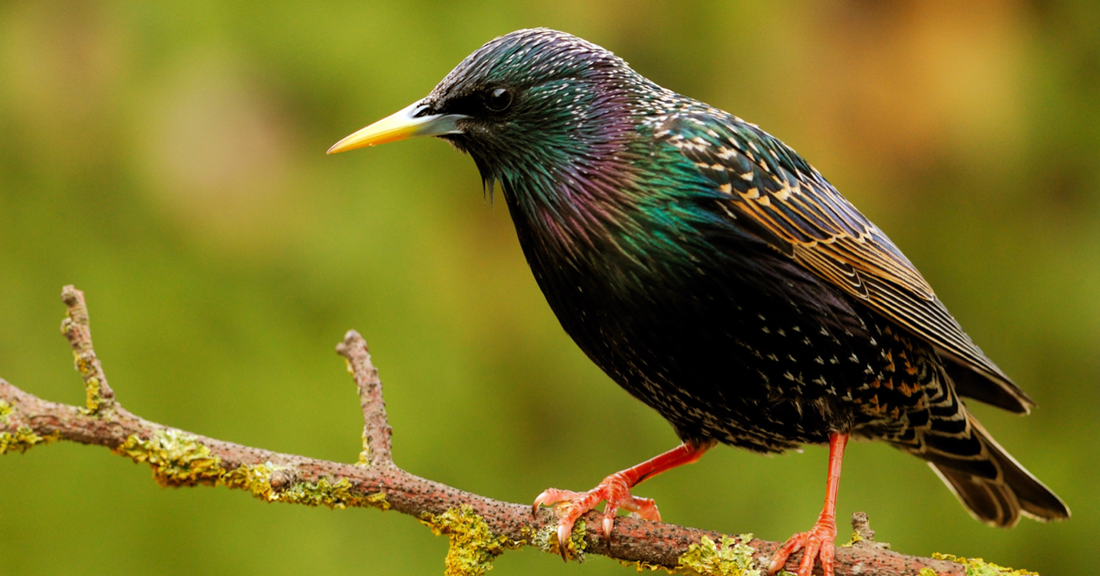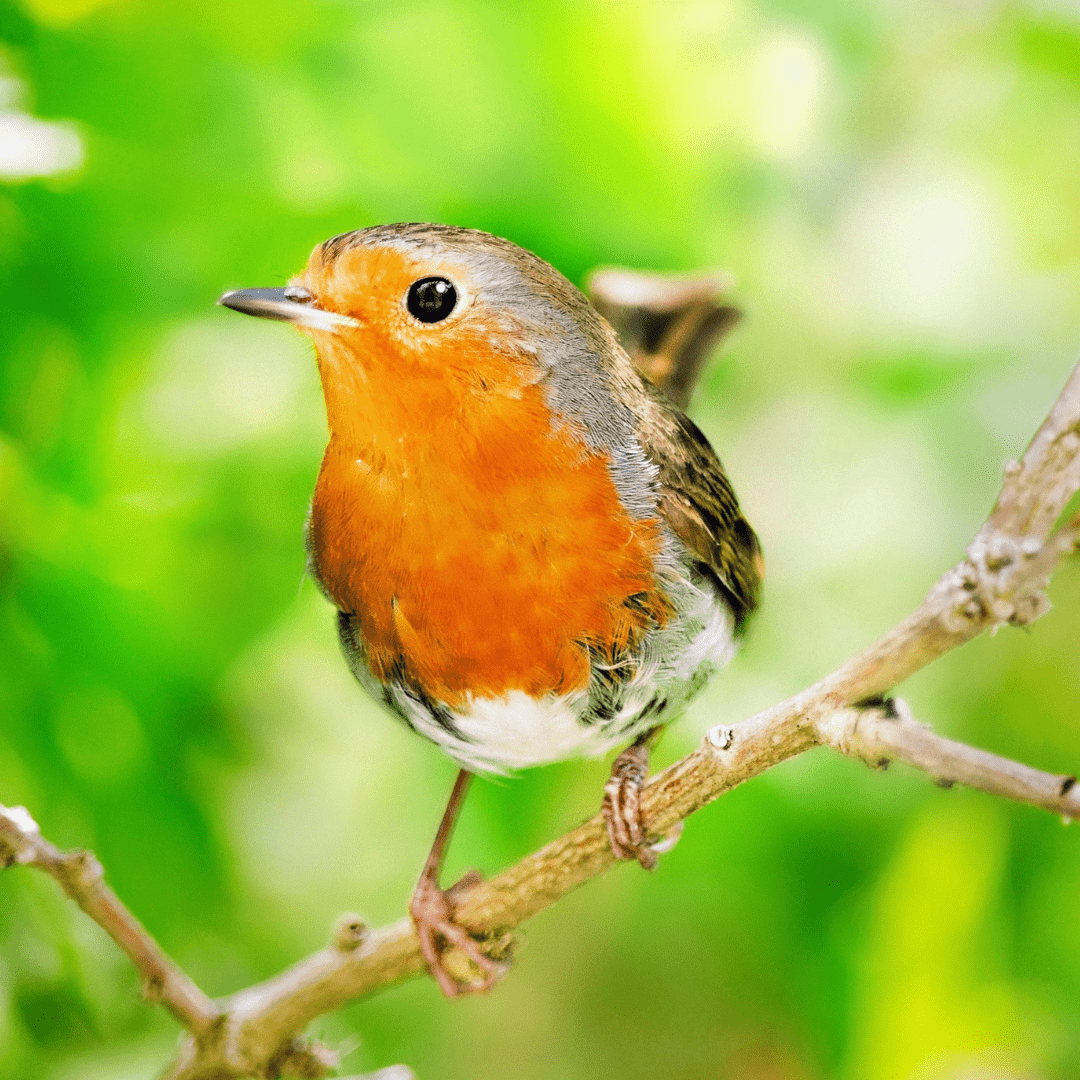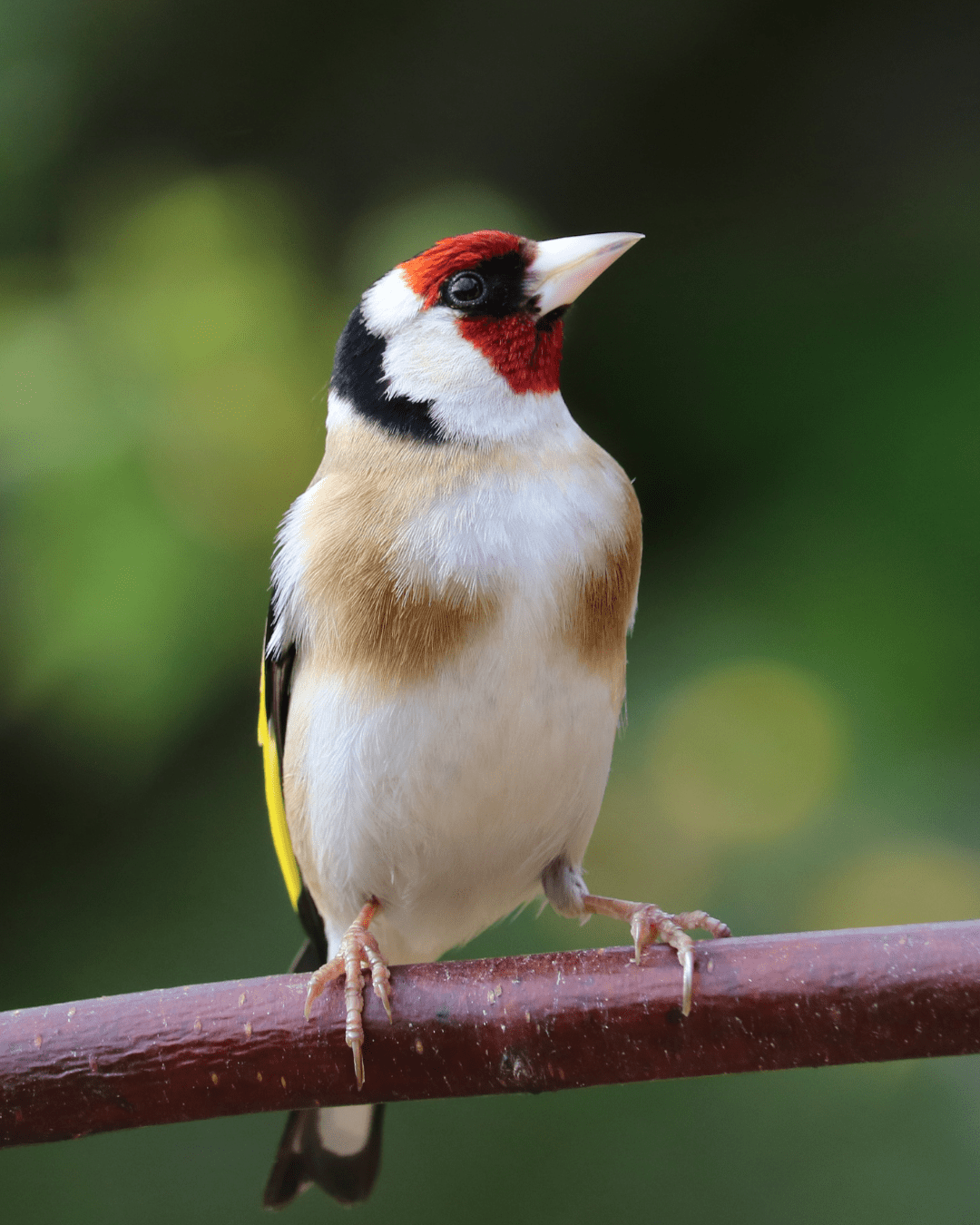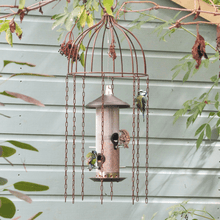A Garden Birdwatcher’s Guide to Starlings

Not always our favourite bird table visitors, starlings are easily recognised in British gardens. Starlings are noisy, skittish, bold birds and are a little smaller than a blackbird. Although they look black from a distance, starlings have iridescent plumage and a beak that is yellow during breeding season before turning a dark brown over winter. We have starlings that are resident in the UK all year round and we are joined by birds escaping the harsh Eastern European winters from late September onwards. Although it may be hard to believe if you have starlings visiting your garden, numbers have declined rapidly since the early 1980s, particularly in woodland areas, and starlings are now on the BTO conservation redlist. The cause of the decline is unknown but may be linked with a reduction in invertebrate numbers that could have been caused by modern farming techniques. Starlings are well known for descending in flocks to eat the contents of our bird feeders, but they do need our support. You can use a Squirrel Buster to give smaller birds access to a feeder of their own, while offering starlings access to a supply of food on a bird table or ceramic feeder. Starlings do not establish territories and live in loose groups who feed communally. During nesting season male starlings will begin building a nest using dry grass and leaves in a cavity and decorating it with flowers and fresh leaves to attract a mate. The female will line the nest base with fine grasses, moss and feathers before laying 4-6 pale blue eggs in mid-April. Laying is timed across the flock so that chicks all hatch at the same time. The female will incubate the eggs for 12 days before feeding the hatched chicks on insects, spiders, earthworms and larvae for 12 days. Starlings fledge at around three weeks and are fed for around a week until they can find food of their own. Starlings are noisy birds with a repertoire of whistles, songs (parts of which mimic other birds) and clicks. Legend has it that starlings were introduced into North America by amateur ornithologist Eugene Schieffelin, who was on a mission to introduce every bird species mentioned by William Shakespeare to his country (although this theory is now thought to be speculation). Starlings are well known for their beautiful murmurations.
In Autumn and Winter they will flock together in their thousands (or even millions) in the sky above their roost and perform a breathtaking and hypnotising aerial display before going down for the night. It is thought that murmurations are a way to make themselves less vulnerable to predators and warm up before bed. Starlings are surrounded by a wealth of symbolism and folklore, making them one of our most fascinating birds. They are thought to symbolise community, unity, family and relationships and were sacred to both the Celts and Romans. Mozart was thought to teach his pet starling passages from his compositions (and the starling contributed variations to the melody), and arranged an elaborate funeral when his starling died. Pliny the Elder believed the birds could be taught sentences in Greek and Latin, and dreaming of a flying starling is thought to symbolise growth and prosperity.
You can learn more about stopping starlings from eating all the bird food in this blog post, and more about their murmurations in this blog post.
Ready to deepen your connection with the birds in your garden? Discover more about your feathered friends and how to attract them to your space with Amidst the Birdsong: A Garden Birdwatcher's Journal. This beautifully crafted journal is the perfect companion for anyone looking to observe and learn about the birds visiting their garden. Start your birdwatching journey today – click here to learn more.


















